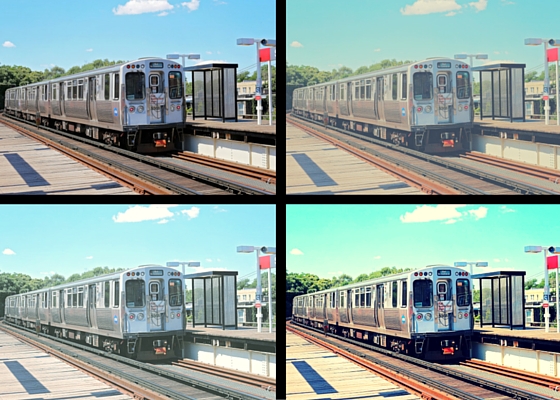The end of Source Code seems somewhat open to interpretation, but there’s enough evidence to show that Colter ends up in an alternate reality and does not change events in our reality.
Dr. Rutledge explains that when Colter goes to the train, it isn’t time travel. It’s “time reassignment.” Colter doesn’t go back in time every time he enters source code—he experiences what happened on the train by reliving memories of Sean, one of the passengers on the train.
Why Colter’s “time reassignment” isn’t just a simulation
A few things in the movie point to larger worlds outside the source code.
Mainly:
1. Calls and emails still get out into the world outside the train, even if they’re going to different versions of people (not the people in our reality)
2. If source code were only a simulation based on Sean’s memories, Colter wouldn’t be able to take action that goes beyond what Sean experienced (like when Colter gets off the train because he thinks the suspect got off the train).
3. Dr. Rutledge and Goodwin keep saying everything beyond the mission is irrelevant, so they wouldn’t have spent extra time programming small, irrelevant details into source code. For example, it shouldn’t matter what the college student is studying, but we know he is preparing for a psych exam. There is no reason to program jokes for the comedian, but he has a few ready to go when he’s asked to entertain the passengers.
If source code isn’t simply a simulation program and we take the end of the movie into consideration, then source code is a system for creating alternate realities.
How alternate realities function in Source Code
1. Every time Colter goes into source code, he goes into a different, alternate reality. He never visits the same alternate reality twice. “Time reassignment” is a reset button, not a rewind button. Each time, Colter gets a fresh start in a new alternate reality—not a second chance in the same reality.
2. The first few outcomes on the train are similar, until Colter has a better understanding of the situation and his mission to find the bomber. The more he learns about what happens on the train, the more he is able to alter the outcome. Every change pushes each alternate reality in a new direction:
- In one version, Christina lives
- In another version, Colter fights the guy wearing aviator glasses
- In another version, Colter dies outside the train, on the tracks
- In another version, Derek kills both Colter and Christina
3. Colter is tethered to his physical body in the original reality, so every time he dies in an alternate reality, his mind comes back to his body.
4. After Colter’s last time in the source code (where he saves everyone), Goodwin shuts off Colter’s life support. Colter doesn’t have a physical body to return to anymore, and he didn’t die in the train explosion, so he can live out the rest of his life with Christina in the alternate reality where he prevented the explosion.
5. When we see Goodwin receive Colter’s email near the end of the movie, that’s in the final alternate reality. There, Colter’s consciousness exists in two places at once—in the tank at the air force base and also in Sean’s body.
So what’s happening in the original reality?
In the original reality, the train attack still happens. Colter’s work prevents the second attack. Colter’s body dies. We don’t know what will happen to Goodwin, since she killed Colter instead of following her orders to wipe his memory.
A final note
Colter’s success in preventing the train explosion delays the opportunity to test source code in the final alternate reality. Dr. Rutledge has to wait for another opportunity. The interesting thing is, Colter could have gone through this entire cycle before and he wouldn’t know. In countless alternate realities, there could be countless people walking around with Colter’s consciousness in their heads because he prevented some tragic event. And every time, he thinks it’s the first time he succeeded.
